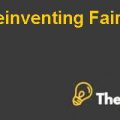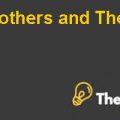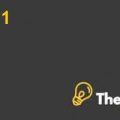Question 1
Why does Carlyle want to exit from its investment in Moncler?
Carlyle is a private equity firm and initially at the time of acquiring the stake of the company, the management of the company had stood ahead of all the PE firm for acquiring Moncler due to the global footprint and the willingness of the management to pay a fair price or the minority stake. Ruffini had always felt that the interests and the vision of Carlyle were always aligned with his ambitions about taking Moncler public and global.
Carlyle had purchased the equity stake in Moncler in 2008 and between 2008 and 2010, the performance of Moncler had been beyond expectations and there were a number of future growth opportunities that had yet to be explored. It was in early 2011, when the management of Carlyle had started to consider the exit options and to have a timely exit to generate value for the investors.
Moncler had been an important investment for the Carlyle group and the primary reason for having such a quick and attractive exit was the strong performance of the company and the quick and swift responses to the changes that were taking place within the European economy. This would be the first exit for the Carlyle’s Europe III fund and this exit would allow the group to return the money to its investors and provide them high return on investment and also set the stage for the future fundraising rounds. Furthermore, there were also plans to take Carlyle public itself therefore, the exit from Moncler would contribute to the global business model of Carlyle by validating it.
Slalom to the Finish Carlyle’s Exit from Moncler Harvard Case Solution & Analysis
Question 2
What constraints does Carlyle face in exiting from its investment in Moncler?
There are a number of constraints that were faced by the Carlyle group in exiting its investment in Moncler. These are listed below:
- Carlyle itself had plans to take Carlyle public therefore, the company had to pursue the exit from this investment now.
- 2010 had started as a year of failed IPOs and the primary reason for this was suspected as the high levels of the debt on the balance sheet of the company. Moncler also had high debt on its balance sheet.
- The team was still deliberating over the right time for the potential IPO of Moncler and the plans of all the other fashion companies to go public also had to be taken into account before implementing the IPO exit strategy for Moncler if the company moved ahead with this exit strategy.
- IPO seemed to be the most feasible exit option for Moncler however, Carlyle believed that it was also equally important for the company to get to the market before Ferragamo and Prada for achieving sufficient uptake from the investors.
- It takes around 100 days to complete the listing process from the time when the company files the documents with the regulator.
- When the company had registered for the IPO in April, the stock markets had started to look less promising and many of them had cancelled their planned listings.
Finally, there were also concerns regarding the valuation of the Moncler for IPO................
This is just a sample partical work. Please place the order on the website to get your own originally done case solution.










